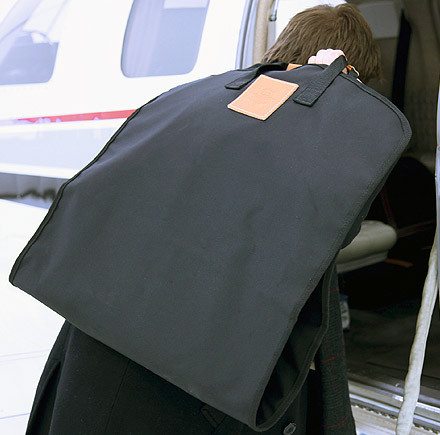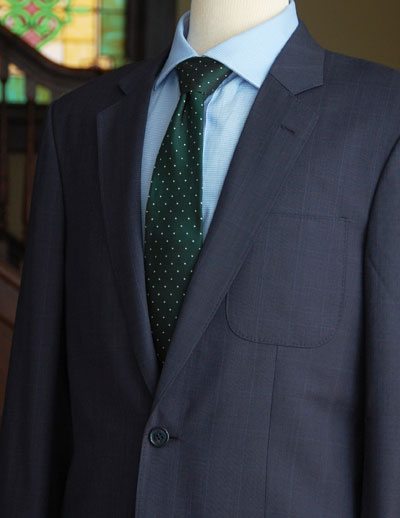
This is a sponsored post brought to you by my friends over at Blue Claw Co. More than just a sponsor – Blue Claw is the luggage company I use to protect my custom business wardrobe when I travel. Their bags look great, and are made to last right here in the USA! – Check them out by Clicking Here.
How to travel light while packing all you need?
What exactly is an interchangeable wardrobe?
How do you do it Antonio – what are your tips for putting clothing together?
I took a look at my own wardrobe and put together a video on my own interchangeable travel clothes.
I’ve been using the same small set of clothes for many conferences now, with a little variation from one to the next.
It packs light, works across all kinds of weather, and most importantly keeps me looking sharp without any effort on my part.
You can check out the video right here — below, I’ll outline some of what I talk about in greater detail.
1. Understand Your Needs
The key to packing light is to only bring the things you need.
It took me some trial and error to get my travel wardrobe down to the exact minimum of items I can get by on. Occasionally I’ll change some details up here or there, like rotating out my ties and pocket squares for some different designs, but mostly I stick to the same core collection of interchangeable items.
Knowing what you’ll need means thinking about where you’re going and what you’re doing. For example, most of my trips involve hotels and convention centers — I need to take the weather outside into a little bit of consideration, but mostly I’m dressing for climate-controlled indoors settings. That means long trousers, dress shirts, and jackets for the most part. If I’m going somewhere really formal I’ll throw a suit into the mix, but there’s really not that many suit-and-tie occasions on my agenda these days.
I pack a little bit of variety so my outfit can adapt to different places. I’ve got my dress trousers and nice leather shoes for a more refined look, and when I want to dress it down a bit I use dark denim jeans and a pair of Western boots to relax the look.
What I don’t have is a lot of “just in case” items. I leave the heavy overcoat at home and skip the suit unless I know there’s an occasion that will demand it. They’re not going to be useful 95% of the time, so there’s no reason to worry about them.
![newClassicWeekender_1024x1024]() 2. Protect Your Investment
2. Protect Your Investment
Good jackets and shirts are not cheap. My travel wardrobe alone is worth about 5-8K depending on what I pack.
You see most of my traveling wardrobe is custom made. Some of that came from my own custom clothier, of course, but it still represents a significant investment. Keeping it in good shape is important to me – these are my tools!
Anything that can spill or stain (toiletries, mostly) goes in my Dopp kit. That’s a small, zippered container that I put inside my other luggage. It has a lined inside, so that even if my shampoo explodes at 15,000 feet or something like that, nothing but my other toiletries get messed up.
The Bay Head Bathroom Bag (Dopp Kit) and the rest of my luggage are all also high-quality.
I use a lot of bags from Blue Claw Co., an American company that we’ve reviewed here on the site before, both for their look (dark nylon and lighter leathers — very striking) and for the sturdiness.
My Blue Claw weekender bag has been thrown out of my minivan by an energetic eight-year-old and survived without any scuffs or tears.

The clothes inside did just fine! Luckily, it didn’t get run over in the parking lot — that would have been quite the stress test — but I’m confident that, short of a real disaster, my clothes are safe inside my luggage.
I also use a Blue Claw Gooseneck garment bag for my jackets as much as possible.
If I’m flying on a short trip, sometimes I’ll leave the garment bag at home and fold the jacket up into something small like the weekender bag, but for the most part I prefer to have it in the garment bag where it can lie flat.
I haven’t had to press or dry clean my jackets for a couple months now, and I’ve been traveling hard — that’s because even when I’m traveling, my jackets are on hangers, draped just like they would be on my body.
3. The Interchangeable Wardrobe
 Here is where we really come to the secret of packing light.
Here is where we really come to the secret of packing light.
I’m able to get by with so few garments because almost all of them can be worn interchangeably.
I don’t have one jacket with a couple shirts that go with it, and then another jacket with two different shirts to match that one.
I can wear any of my jackets with any of my shirts, and vice versa.
I always travel with at least two jackets, and preferably three (it’s easy to do even when you’re flying if you wear one of your jackets onto the plane).
They’re all different colors, and I pre-load each of them with a pocket square in the breast pocket. I also stick some business cards in the pockets of each one — not a fashion tip, per se, but handy when you’re traveling from conference to conference.
My shirts are also chosen to be flexible.
I always bring one plain white dress shirt, and every traveler should do the same — it’s the ultimately versatile shirt.
You can wear it with a suit and tie, or you can wear it with blue jeans and roll the sleeves up, or anywhere in between.

The other shirts cover a range of patterns and colors that are easy to match: semi-solid light blue (with a herringbone weave to make it a bit more interesting), blue-and-white candystripe, and a dusky lavender with contrasting herringbone. I also pack a short-sleeve linen shirt and guayabera in the summer, for when I want to shed the jacket and look casual.
 I wear dark, fitted jeans when I travel, and pack a pair of lightweight gray flannel trousers and a pair of khaki dress slacks. Any of those can go with any of my suit jackets, for a wide variety of looks.
I wear dark, fitted jeans when I travel, and pack a pair of lightweight gray flannel trousers and a pair of khaki dress slacks. Any of those can go with any of my suit jackets, for a wide variety of looks.
My neckties cover a good range of colors and all have pretty basic patterns — I keep it simple so they’re easy to match.
For shoes I usually have a pair of casual brown leather bluchers cap-toes, a pair of Sperry topsiders (slip-on boat shoes), and my Lucchese Western boots.
And here’s the total effect of all that: if you slim me down to my bare essentials, and say I can have three jackets, five shirts, three pairs of trousers, two neckties, and two pairs of shoes, how many different outfits do I have?
Answer: 180.
A hundred and eighty different combinations.
Now, a few of those might look a little off, but by and large I can combine any one of my jackets, shirts, trousers, ties, and shoes and be in good shape. Throw in three pocket squares and suddenly I’m at 540 different outfits — some of them might be pretty similar, but it’s still an incredible number!
4. Wear Your Bulkiest Clothing In Transit
This is an easy way to save yourself some space in your luggage: when you travel, and especially when you fly, wear your bulkiest items.
For me, that usually means my boots, my jeans, and one of my sports jackets. I don’t necessarily wear the jacket if I’m driving, but I’ll have it on a hanger in my car, and I’ll throw it on when I get out.
If your travel plans are going to necessitate an overcoat, you’ll want to be wearing that onto the plane or throwing it in your car as well. There’s no need to try and fit it into a garment bag or small duffel. A big coat can even become cargo space of its own — you can fill the pockets with small items.

Bonus: My Traveling Secrets
These last few tips are a few tricks I’ve picked up over the years to making looking good while I travel easier.
They’re the product of experience and practice — over time, I’ve learned what works well for me, especially when I’m not only traveling but also presenting or doing business, and I need to look my best.
Shirt Stays: These look less than masculine when you see pictures of them, but they work great. They’re little elastic garters that clip to the bottom of your shirt and the tops of your socks, making sure the shirt stays tugged down and neatly tucked inside your trousers. It’s a fantastic way to never have to worry about “muffin top” — the unattractive look of a guy with a lot of extra shirt cloth billowing out over the waistband of his trousers. I use a set from Sharp & Dapper – they have lasted for over a year which is much better then cheap versions I’ve tried in the past.
 Collar Stays: I use Wurkin Stiffs magnetic metal stays that slip in underneath the shirt collar. These not only keep the collar points from curling up, they also give them enough weight to make sure the collar never flops up over my jacket lapels.
Collar Stays: I use Wurkin Stiffs magnetic metal stays that slip in underneath the shirt collar. These not only keep the collar points from curling up, they also give them enough weight to make sure the collar never flops up over my jacket lapels.
Undershirts: I always have a Ribbed Tee V-neck undershirt with sleeves under my shirt. That keeps any sweat that accumulates from soaking into my dress shirt or my jacket — it’s another way to protect those big investments. An undershirt is a lot cheaper to replace! Since mine are T-shirt style, I can also wear them as workout clothes if I hit the hotel gym.
Those three products are my invisible tricks for looking extra-sharp at conferences. All told, they take up maybe six cubic inches in my luggage, and most of that is undershirt — but they make a big difference in how neat I can look even after a day on the road or a long weekend in a convention center.
 2. Protect Your Investment
2. Protect Your Investment